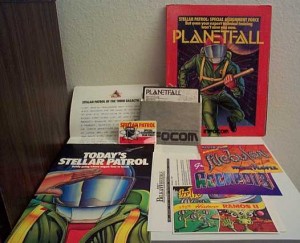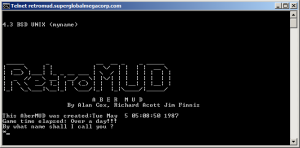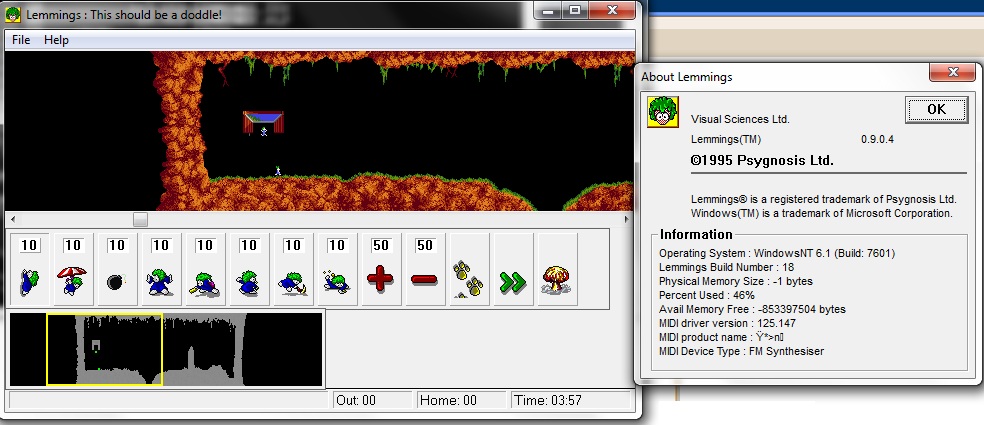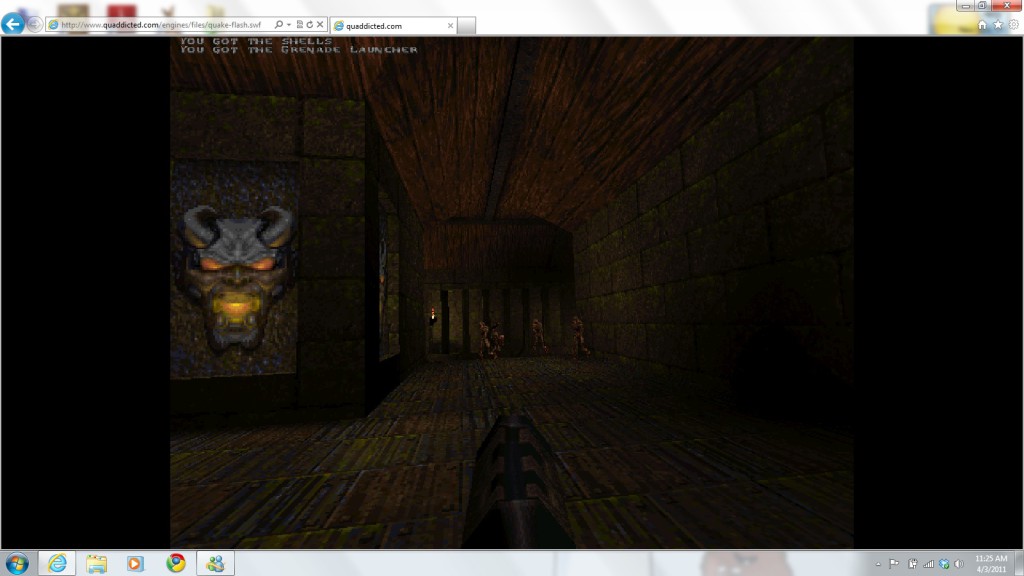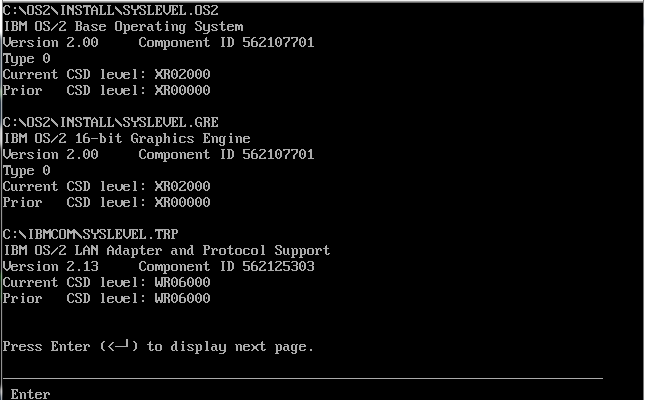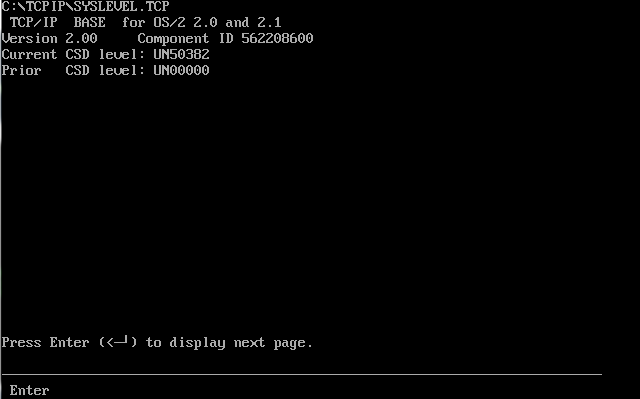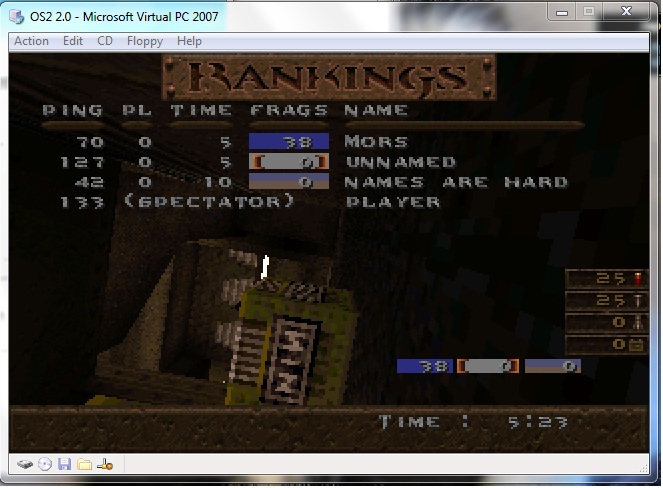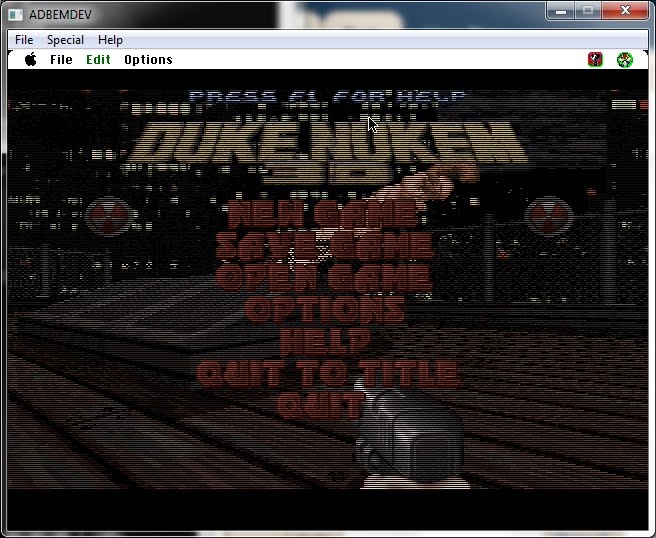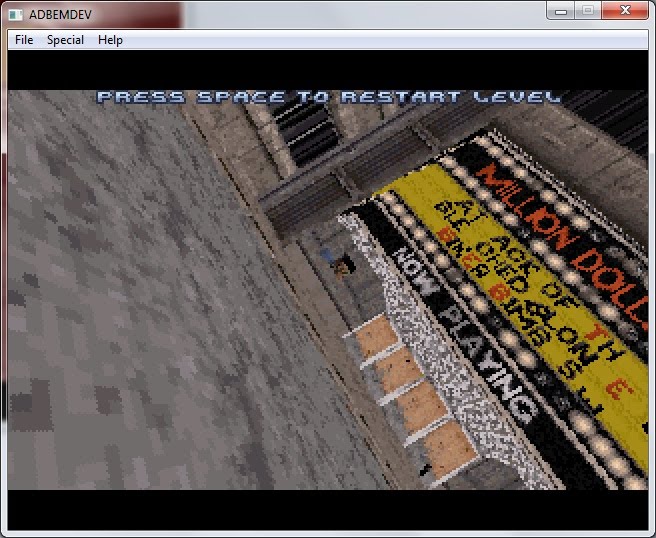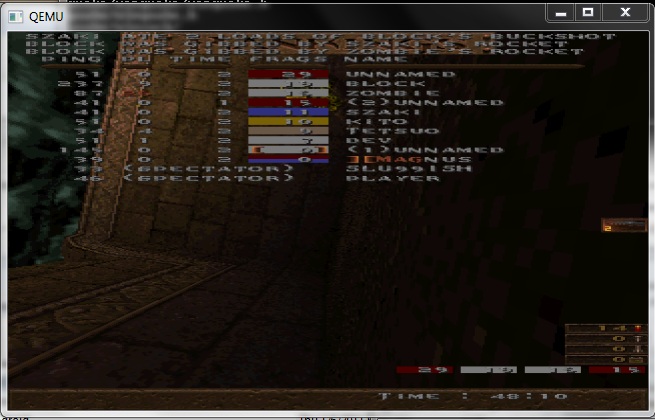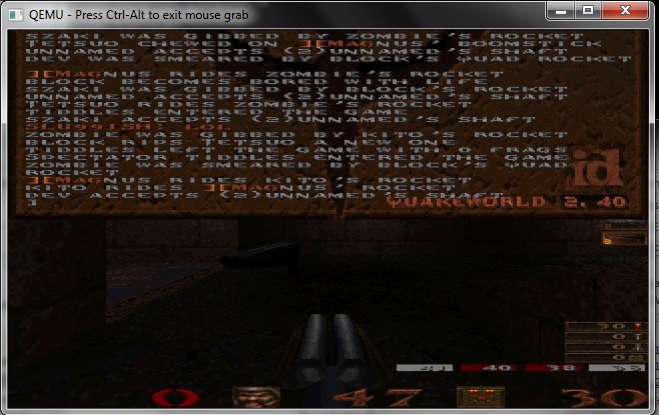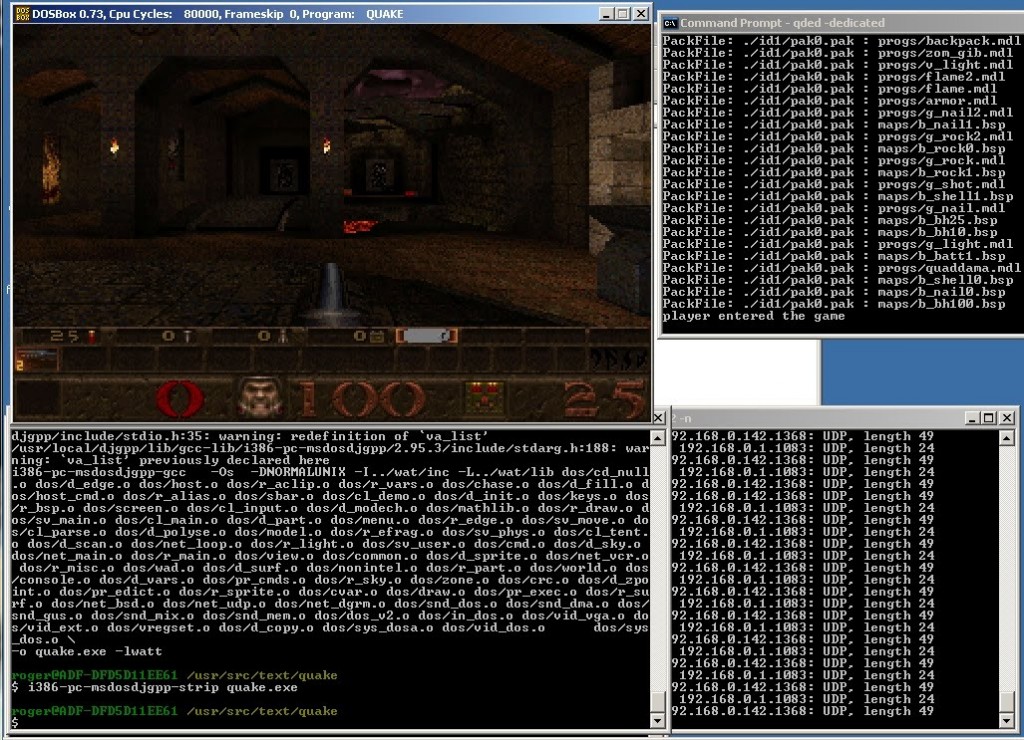So since I was looking at the Doom stuff, I thought I’d try to track down the WinG version of Doom, and luckily someone pack ratted away two versions! Needless to say the older one didn’t work for me, but the last one, the April 13th, 1995 build, worked just great!

WinDoom on Windows 7 x64
Even on Windows 7 x86_64, sp1!
So how much of a chore was this to run back in 1995, before Windows 95?
Well to start WinDoom requires a display capable of at least 256 colors. I thought I’d use Qemu for this, but this proved to be… exceptionally difficult to locate a satisfactory display driver. I know lots of people point to the SVGA.EXE update from Microsoft, that uses VESA extensions to drive the video. Oh sure it sounds great but this is what I got:

And.. corruption.
Ok, so you say, there is this great patch to enable better VESA support right?
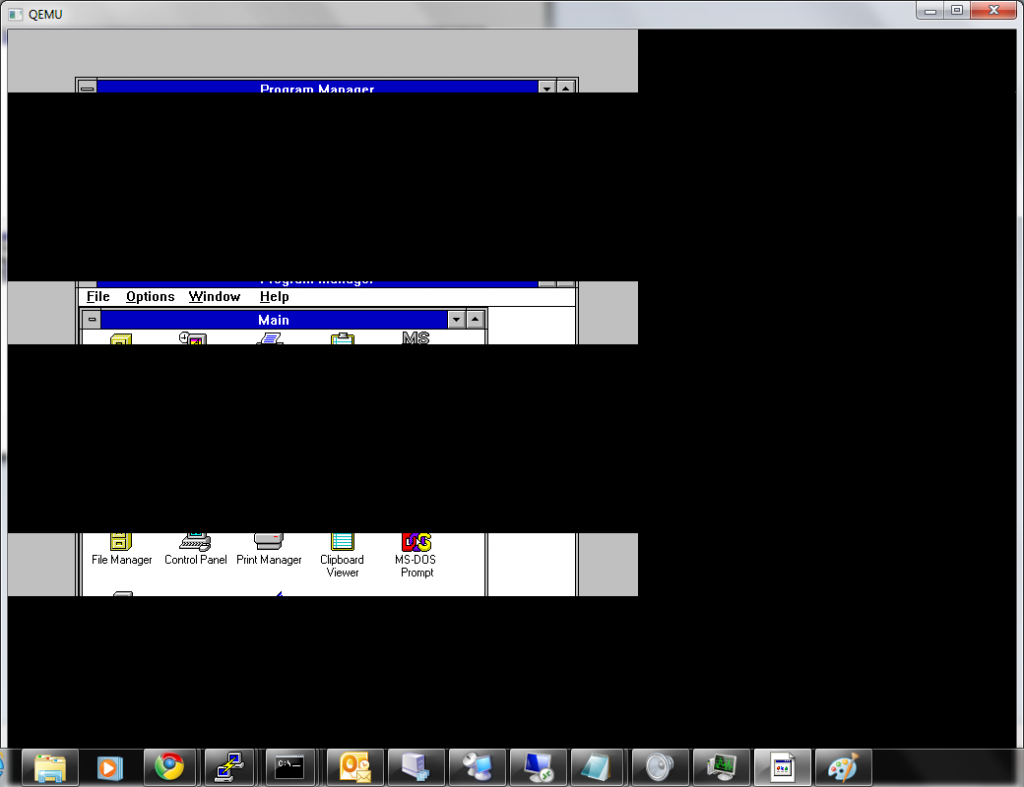
Wrong.
Yeah. I also hunted down various cirrus drivers for the specifically emulated chip (I checked the source) and they were all consistently defective. So I tried using a lower chip driver from HP and amazingly the 640x480x16MM colors works! (well, works ‘enough’).

Installing the right driver.
It’s the GD5430 v1.25f, 640x480x16.8M
The next thing is that Doom in both MS-DOS and Windows are full 32bit executables. On the MS-DOS side, it relies on the DOS4G/W extender. For Windows, it relies on the then new Win32 standard, and Windoom was written to conform to the Win32s standard, meaning with an addon it can run on Windows 3.1, Windows 95, And Windows NT. I just fished around the internet and scored a copy of Win32s 1.25. I just remember this being a somewhat stable version.

Installing Win32s
Win32s installs pretty smooth, (as long as you remember the share.exe). Now we just need the WinG runtime to be installed. WinG was Microsoft’s first real attempt at high speed gaming video under Windows. From what I understand it kind of went down because it was ‘too difficult’, and buying DirectX seemed to be a better fit.
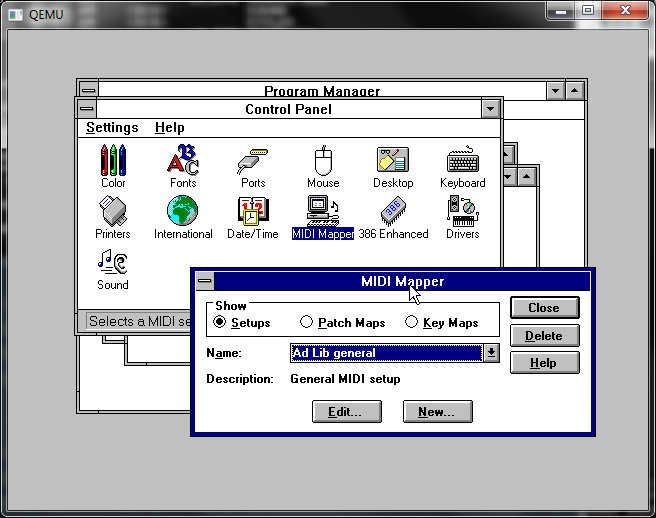
Setting the midi mapper.
Another thing I’ve found is that if you change the midi mapper from the default “Ad Lib” to “Ad Lib general”, you can at least get the midi working in Doom.
Once WinG is installed, then it’ll want to do some blit tests…
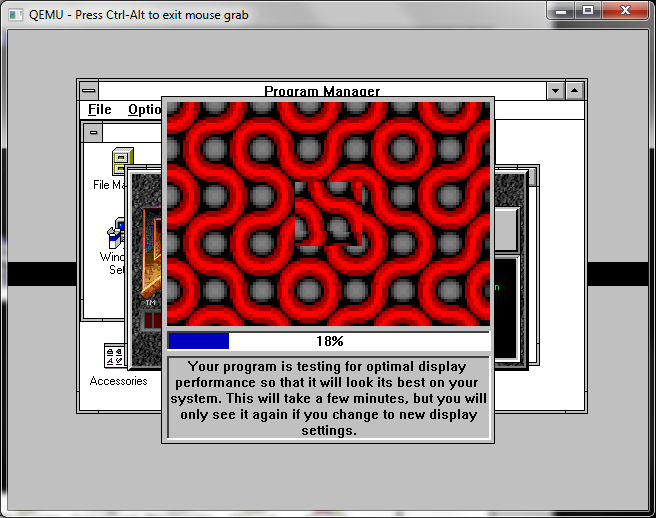
WinG calibrating.
And after that, we can even bump it up to glorious 640×400, something the initial MS-DOS version couldn’t do easily as VESA wasn’t a big standard with INSTALLED cards at the time, and it’d require lots of work from the iD team, where the move to Windows pushed all the peripheral development to the Vendors to work around Microsoft. Even to this day, it’s still a big deal with video and audio.
One thing that is cool about Qemu is that at compile time, you can put in adlib & soundblaster cards to give the ‘full’ Windows 3.1 multimedia experience. There is also GUS (Gravis Ultra Sound) support
in Qemu, but I’ve never played with it..
With all of that out of the way, WinDoom will launch.
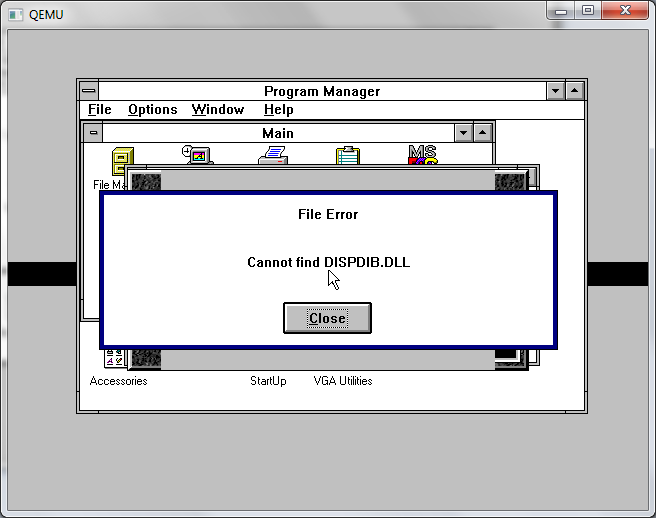
WING dispdib.dll missing error that turned out to be Video for Windows.
Then it’ll throw an error, because Windows 3.1 doesn’t have the same video backend as Windows NT 3.5 (and higher), hit ok and then …
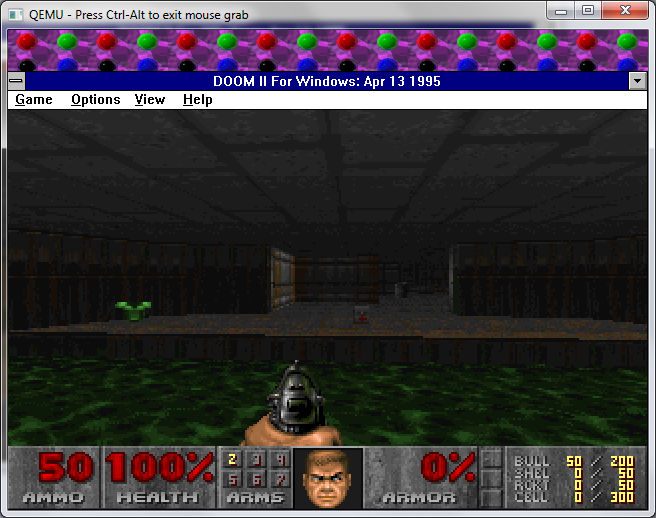
And it works! WinGDoom running on Windows 3.1 on Qemu!
Sadly on Windows 3.1 the sound effects do not seem to work, but overall it’s a GREAT little port, mostly because as it comes up on 16 years old, it still works, and with sound. I wish other OS’s could give this kind of support for legacy applications, even ones that had such a brief window of support.
Anyone crazy enough to even think of playing along can download the blob of software I used to get this going here (Updated on archive.org here: Windows-3.1-WING-doom)
I should also add if you want sound effects to work on WinDOOM you really should install the Video for Windows Runtime, and it’ll work… poorly on Qemu/SoundBlaster 16, but it does work!

